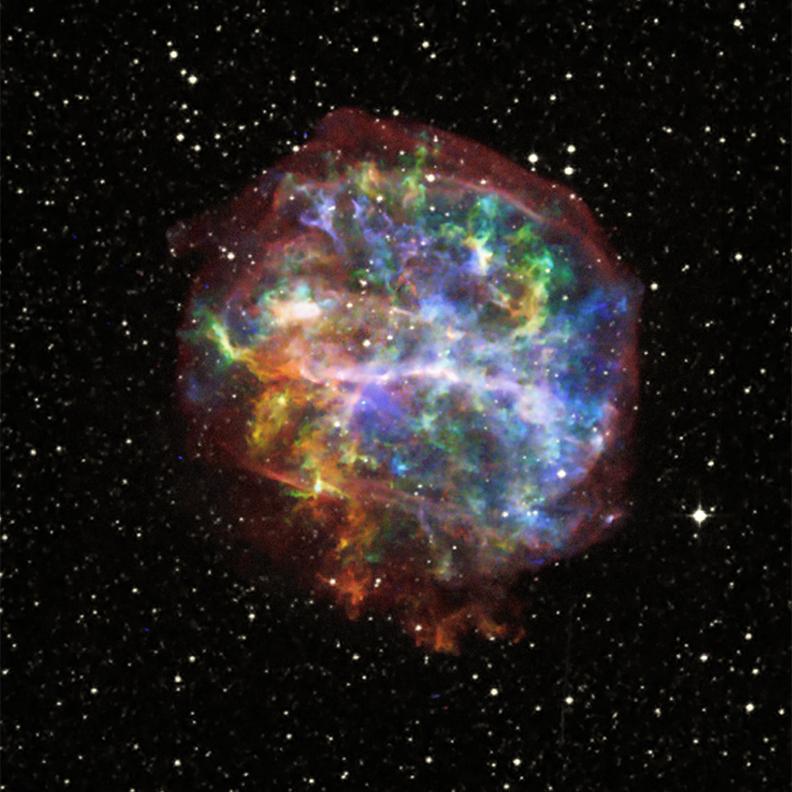Supernova Type II Remnant
Image Credit:
Let's give a quick explanation of how neutron stars and black holes form. Neutron stars start out as medium-high mass main sequence stars around Spectral Type B and A stars and black holes start out as heavy stars at Spectral Types O and B. Once the hydrogen in the core is exhausted, the outer layers fall onto the core, heating it up and allowing the core to fuse helium into carbon, nitrogen, and oxygen via the triple alpha process. Surrounding the core is an envelope of hot hydrogen, still fusing into helium via the CNO cycle. Once the helium in the core runs out, again the star collapses onto the core, heating it up, allowing the heavier elements in the core to, fuse into even heavier material, with a layer of burning helium surrounding the core, followed by a layer of burning hydrogen. These processes and cycles continue until the core is mostly iron. Iron is a unique element in such that in order to furs it, energy must be added and no temperature can cause iron to fuse into anything heavier. When the outer layers collapse onto the core in this case, the temperature rises dramatically, and the outer layers explode into space via a supernova explosion.
A cool thing about supernovae is that all natural elements heavier than iron are created in supernovae. All the heavy elements found naturally on Earth, formed in a supernova. For that matter, any element heavier than helium was also formed in a star. So we are all made up of star stuff.
This is called a Supernova Type II because it is created via a core collapse of a medium-high to high mass star. Supernova Type I are caused by the accretion of material onto a white dwarf and can come from white dwarfs in binary (or multiple-) star systems. Type II supernova have hydrogen present in their spectra, while Type I lack hydrogen.
Supernova Type II remnants can be identified by two properties: hydrogen in their spectra and a stellar object at the center of the supernova remnant. Depending on the mass of the star, the remaining stellar object will either be a neutron star or a black hole. The next two posts will talk about both these remnants.

No comments:
Post a Comment